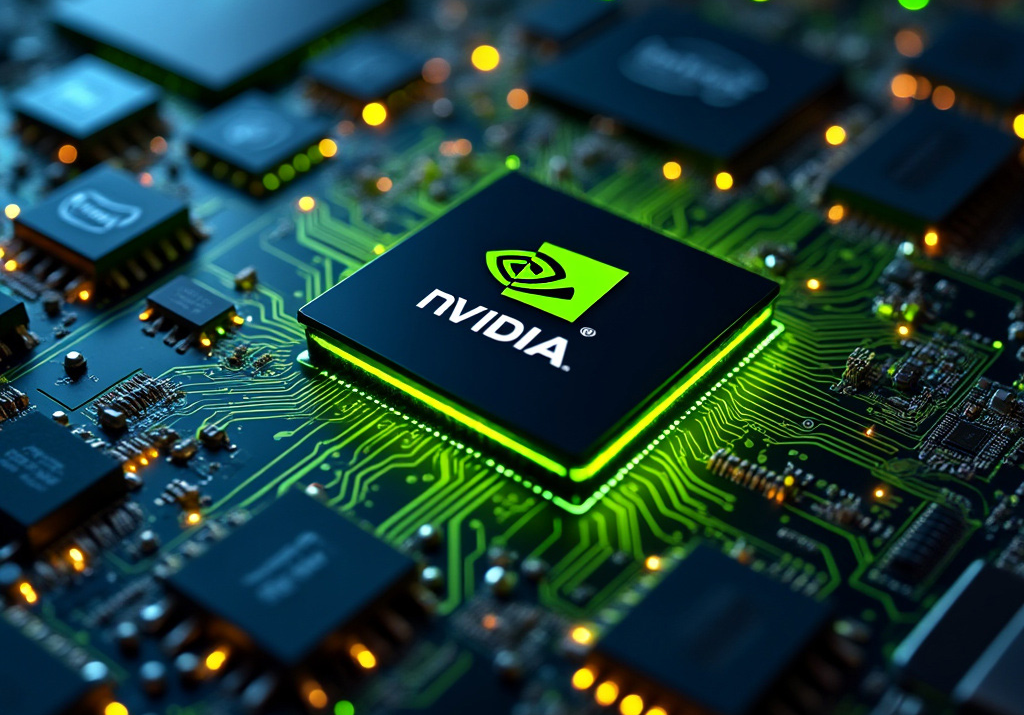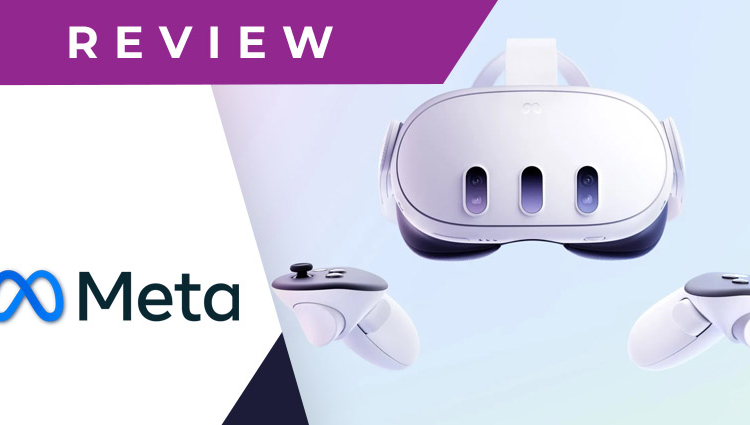Artificial Intelligence (AI) has become a cornerstone of modern technology, driving advancements across industries from healthcare to finance. However, this progress comes with a steep price: an escalating demand for computational power that has pushed the limits of current infrastructure, giving rise to what many call the “compute crisis.” In this context, two groundbreaking AI models—DeepSeek and ASI-1 Mini—have emerged as potential solutions, leveraging innovative architectures to enhance efficiency and adaptability. The Forbes article by Cloris Chen titled “How Does DeepSeek and ASI-1 Mini Impact AI Computing? Explained” (published March 24, 2025, on Forbes), and I’m here to unpack their implications in exhaustive detail. Are these models the key to solving the compute crisis, or do they risk accelerating it? Let’s explore the technologies, their benefits, the economic paradoxes they invoke, and their broader impact on the AI land scape.
1. The Compute Crisis: Setting the Stage
Before diving into DeepSeek and ASI-1 Mini, it’s essential to understand the problem they aim to address. AI models, particularly large language models (LLMs) like GPT or BERT, require immense computational resources for training and inference. These models rely heavily on Graphics Processing Units (GPUs), which excel at the parallel processing needed for AI workloads. However, GPUs are:
- Expensive: High-end GPUs, such as NVIDIA’s H100, can cost over $30,000 each, according to Reuters, making large-scale AI deployments a significant investment.
- Energy-Hungry: Training a single LLM can consume as much energy as several households over months, with estimates from the International Energy Agency (IEA) suggesting data centers could account for a significant portion of global electricity use by 2030.
- Supply-Constrained: Global demand for GPUs has outstripped supply, worsened by manufacturing bottlenecks and U.S. export controls on advanced chips to China, as noted by MIT Technology Review.
This trifecta has created a compute crisis, where the demand for processing power exceeds the infrastructure’s capacity to deliver it affordably and sustainably. Companies are racing to find solutions, and architectures like Mixture of Experts (MoE) have emerged as a beacon of hope. DeepSeek and ASI-1 Mini, highlighted in Chen’s article, build on this foundation, promising to make AI more efficient—but at what cost?
2. Mixture of Experts (MoE): The Architectural Backbone
What is MoE?
The Mixture of Experts (MoE) architecture is a paradigm shift in AI model design. Unlike traditional models, where the entire neural network is activated for every input, MoE divides the model into smaller, specialized sub-models—referred to as “experts.” Here’s how it works:
- Structure: A large AI model is segmented into multiple experts, each trained to excel in a specific domain or task (e.g., natural language understanding, image recognition, or mathematical reasoning).
- Gating Mechanism: When a task is presented, a lightweight “gating” component evaluates the input and selects only the most relevant experts to process it. The rest remain dormant.
- Selective Activation: By activating only a subset of the model, MoE reduces the computational resources required per task, contrasting sharply with the “all-or-nothing” approach of conventional models.
For a deeper technical explanation, Google Research has published extensively on MoE’s origins and applications, highlighting its efficiency gains.
Why It Matters
To illustrate, imagine a traditional AI model as a massive general hospital where every doctor—surgeons, pediatricians, cardiologists—examines every patient, regardless of their ailment. This is inefficient and resource-intensive. MoE, by contrast, is like a triage system: only the specialists needed for a specific case step in, while others stand by. The result? Faster processing, lower energy use, and the ability to scale expertise without scaling compute linearly.
Chen’s article emphasizes that MoE’s efficiency is a game-changer, allowing models to handle complex tasks with a fraction of the resources. This sets the stage for DeepSeek and ASI-1 Mini, which leverage MoE to push the boundaries of AI computing.
3. DeepSeek: Efficiency Through Specialization
Overview
DeepSeek, as described in the Forbes article, is an AI model that harnesses MoE to deliver high-performance computing at a reduced cost. Developed by a Chinese startup founded in 2023 by Liang Wenfeng, DeepSeek has garnered attention for its cost-efficient approach. While specific details about its training data remain opaque, its impact lies in its application of MoE:
- Specialized Experts: DeepSeek’s sub-models are tailored to handle diverse tasks efficiently, from text generation to data analysis.
- Resource Optimization: By activating only the necessary experts, DeepSeek minimizes the computational footprint of each operation.
Forbes has covered DeepSeek’s rise extensively, with articles like “All About DeepSeek — The Chinese AI Startup Challenging US Big Tech” detailing its innovative techniques.
Benefits
- Cost-Effectiveness: Lower resource demands translate to reduced operational costs, making AI accessible to smaller businesses or developers with limited budgets. DeepSeek claims its V3 model was trained for just $5.6 million, a figure that, while debated, is a fraction of the billions spent by OpenAI, per CNBC.
- Scalability: The modular nature of MoE allows DeepSeek to scale its capabilities by adding more experts without a proportional increase in compute needs.
- Speed: Selective activation accelerates inference times, critical for real-time applications like chatbots or autonomous systems.
Real-World Implications
Consider a small startup wanting to deploy an AI-driven customer support system. Traditional models might require a dedicated GPU cluster, costing tens of thousands of dollars. DeepSeek, with its MoE efficiency, could run on a smaller setup, democratizing AI access. Chen notes this trend, suggesting that DeepSeek’s approach could “lower the barrier to entry” for AI adoption—a compelling promise in an industry dominated by tech giants with deep pockets, as highlighted by The New York Times.
4. ASI-1 Mini: Collaboration Meets Efficiency
Overview
ASI-1 Mini, developed by Fetch.AI, takes MoE to the next level by integrating Mixture of Agents (MoA) or Mixture of Models (MoM)—terms used interchangeably in the article. Fetch.AI, known for its work in decentralized AI, positions ASI-1 Mini as a collaborative powerhouse:
- Autonomous Agents: Unlike DeepSeek’s single-model approach, ASI-1 Mini comprises multiple autonomous AI agents, each acting as an expert.
- Collaborative Framework: These agents work together, pooling their expertise to tackle complex tasks, guided by a coordination mechanism.
Fetch.AI’s mission to decentralize AI is well-documented on their official site, emphasizing ASI-1 Mini’s role in scalable, agent-based systems.
How It Differs from MoE
While MoE selects experts within a single model, MoA extends this concept across multiple models or agents. Think of MoE as a solo orchestra conductor choosing which musicians play, and MoA as a team of conductors, each leading their own ensemble, collaborating on a symphony. This multi-agent approach adds layers of adaptability and resilience.
Benefits
- Enhanced Adaptability: Agents can dynamically adjust to changing task requirements, making ASI-1 Mini ideal for unpredictable workloads.
- Optimized Resource Use: Collaboration ensures that resources are allocated efficiently across agents, avoiding redundancy.
- Scalability Beyond Models: MoA’s decentralized nature allows it to scale across systems, potentially integrating with edge devices or cloud networks.
Practical Example
Imagine a smart city system managing traffic, energy, and emergency services. ASI-1 Mini’s agents could include a traffic optimizer, an energy allocator, and a crisis responder, working in tandem to balance resources during a power outage. This collaborative efficiency, Chen argues, positions ASI-1 Mini as a leader in “scalable and adaptable AI solutions,” a view echoed by World Economic Forum.
5. The Compute Crisis Conundrum: Jevons Paradox in Play
Efficiency’s Double-Edged Sword
At first glance, DeepSeek and ASI-1 Mini seem like saviors of the compute crisis. Their ability to do more with less could reduce the strain on GPU infrastructure and lower energy costs. However, Chen introduces a critical counterpoint: the Jevons Paradox.
What is Jevons Paradox?
Named after economist William Stanley Jevons, this paradox posits that increasing the efficiency of a resource can paradoxically increase its consumption. In the 19th century, more efficient steam engines didn’t reduce coal use; they made steam power cheaper, spurring industrial expansion and higher coal demand, as explained by The Economist. Could AI face a similar fate?
Applying Jevons to AI
- Increased Adoption: If DeepSeek and ASI-1 Mini make AI cheaper and faster, more entities—businesses, governments, even individuals—might adopt it. A retailer might add AI analytics, a school might deploy AI tutors, and a hobbyist might run AI art generators.
- Expanded Use Cases: Existing users might scale up, integrating AI into every facet of their operations, from supply chain optimization to personalized marketing.
- Aggregate Demand Surge: Even if each task uses less compute, the sheer volume of new tasks could drive total demand skyward.
Chen poses the question: “Are we solving the compute crisis with these innovations, or are we accelerating it?” The answer isn’t binary—it’s a tension between efficiency gains and consumption growth.
Evidence and Analogies
Historical parallels abound. The rise of fuel-efficient cars didn’t reduce gasoline use; it encouraged longer commutes and more driving, per the U.S. Energy Information Administration. In AI, the IEA reported in 2023 that data center energy consumption doubled between 2018 and 2022, despite efficiency improvements, due to increased workloads. DeepSeek and ASI-1 Mini could follow suit, amplifying compute needs as their accessibility fuels demand.
6. Infrastructure Challenges: Beyond Efficiency
The GPU Bottleneck
Chen underscores that GPUs remain the “foundation of AI infrastructure,” but their limitations are stark:
- Cost: A single NVIDIA H100 GPU can cost over $30,000, as noted by TechCrunch.
- Supply Issues: Semiconductor shortages, intensified by U.S.-China trade disputes, limit GPU availability, per BBC.
- Energy Footprint: Data centers powering AI consume vast electricity, with projections from Nature suggesting AI could account for 20% of global energy use by 2030 if unchecked.
MoE and MoA reduce per-task GPU needs, but if Jevons Paradox holds, the total number of GPUs required could still rise.
The Need for Scalability
Efficiency alone isn’t enough; infrastructure must scale to match growing demand. Chen highlights:
- Decentralized Solutions: Fetch.AI’s decentralized ethos with ASI-1 Mini hints at edge computing or peer-to-peer networks, distributing compute loads beyond centralized data centers, a concept explored by IEEE.
- Alternative Hardware: Innovations like TPUs or neuromorphic chips could complement GPUs, offering specialized efficiency, as discussed by MIT News.
- Investment Trends: SingularityNET’s $53 million infrastructure investment, cited in the article, reflects a shift toward securing compute as a strategic asset.
Without scalable infrastructure, the efficiency of DeepSeek and ASI-1 Mini risks being a temporary fix to a systemic problem.
7. Industry Trends: Compute as Competitive Edge
A Strategic Shift
Chen notes a pivotal trend: “Companies are now focusing not just on developing better AI models but also on securing compute resources.” This marks a maturation of the AI industry:
- Compute as Capital: Access to compute is becoming as critical as algorithmic innovation. Firms with robust infrastructure can deploy models like DeepSeek and ASI-1 Mini at scale, outpacing rivals.
- Investment Surge: Beyond SingularityNET, giants like Microsoft and Google are pouring billions into data centers, signaling a race for compute dominance, per Bloomberg.
Competitive Implications
- Winners and Losers: Companies that can’t secure or optimize compute risk falling behind. A startup with a brilliant MoE model but no GPU access might flounder, while a well-resourced competitor thrives.
- Global Dynamics: Regions with advanced infrastructure (e.g., the U.S., China) may widen their AI lead, while others struggle to catch up, a trend analyzed by Stanford University.
This shift reframes AI success as a dual challenge: innovate technologically and master resource logistics.
8. Critical Analysis: Solving or Exacerbating the Crisis?
The Case for Optimism
DeepSeek and ASI-1 Mini offer tangible benefits:
- Immediate Relief: Their efficiency reduces the compute burden for current users, easing pressure on existing infrastructure.
- Innovation Catalyst: Lower costs could spur breakthroughs in underserved fields like education or climate modeling.
- Sustainability Potential: Reduced energy per task aligns with green computing goals, if total demand stabilizes, as noted by Greenpeace.
The Case for Caution
Yet, the Jevons Paradox looms large:
- Demand Explosion: Historical trends suggest efficiency drives usage, not conservation. AI’s compute footprint could grow exponentially.
- Infrastructure Lag: Without rapid scaling, supply shortages could bottleneck progress, raising costs and limiting access.
- Unintended Consequences: Over-reliance on efficient models might divert focus from alternative solutions like quantum computing, per Scientific American.
A Balanced Perspective
The truth likely lies in the middle. These models mitigate the crisis in the short term but could amplify it long-term unless paired with strategic infrastructure growth. Chen’s article leaves this tension unresolved, inviting further exploration.
9. Latest Top 10 FAQs About DeepSeek, ASI-1 Mini, and AI Computing
As interest in DeepSeek and ASI-1 Mini grows, so do questions about their technology, impact, and implications. Below are answers to the top 10 FAQs based on current discourse as of March 24, 2025:
1. What is DeepSeek, and who created it?
DeepSeek is an AI model leveraging the Mixture of Experts (MoE) architecture for efficient computing. It was developed by DeepSeek AI, a Chinese startup founded in 2023 by Liang Wenfeng, aiming to challenge U.S. dominance in AI, per Forbes.
2. What makes ASI-1 Mini different from other AI models?
ASI-1 Mini, created by Fetch.AI, uses a Mixture of Agents (MoA) approach, where autonomous AI agents collaborate on tasks. This contrasts with single-model systems like DeepSeek, offering greater adaptability and scalability, as outlined on Fetch.AI’s site.
3. How does MoE improve AI efficiency?
MoE divides a model into specialized “experts,” activating only those needed for a task. This reduces compute and energy use compared to traditional models, a concept detailed by Google Research.
4. Can DeepSeek and ASI-1 Mini solve the compute crisis?
They alleviate it by optimizing resource use, but the Jevons Paradox suggests increased efficiency could drive higher demand, potentially worsening the crisis, per The Economist.
5. How much does it cost to train models like DeepSeek?
DeepSeek claims its V3 model cost $5.6 million to train, far less than the billions spent on models like GPT-4, though skepticism remains, per CNBC.
6. What is the environmental impact of these models?
Their efficiency lowers energy per task, but widespread adoption could increase total energy use. The IEA warns AI could significantly impact global electricity by 2030.
7. Are these models accessible to small businesses?
Yes, their cost-effectiveness lowers barriers, enabling smaller entities to deploy AI without massive GPU investments, a point Chen emphasizes in her Forbes article.
8. What hardware do DeepSeek and ASI-1 Mini require?
They primarily use GPUs but optimize usage via MoE and MoA. Alternatives like TPUs or neuromorphic chips could enhance performance, per MIT News.
9. How do they compare to models like GPT or BERT?
They’re more efficient due to selective activation (MoE/MoA) versus the full-model activation of GPT/BERT, though they may trade some generalization for specialization.
10. What’s the future of AI computing with these models?
They could democratize AI and drive innovation, but without infrastructure scaling, they risk amplifying the compute crisis. Long-term success depends on balancing efficiency with resource expansion.
10. Conclusion: Navigating the Future of AI Computing
DeepSeek and ASI-1 Mini are not just technological marvels; they’re a litmus test for the AI industry’s ability to balance innovation with sustainability. Their MoE and MoA architectures redefine efficiency, making AI faster, cheaper, and more adaptable. Yet, the specter of Jevons Paradox warns that efficiency alone won’t suffice—without scalable infrastructure, the compute crisis could deepen.
These models as a double-edged sword. They empower a new wave of AI adoption, but their success hinges on proactive planning. Industry leaders must invest in decentralized networks, alternative hardware, and energy-efficient data centers to harness their potential without breaking the system. For now, DeepSeek and ASI-1 Mini are a bold step forward—but whether they solve or accelerate the compute crisis remains an open question, one that will define AI’s trajectory for decades to come.








